
The Oneida Community was a perfectionist religious communal society founded by John Humphrey Noyes and his followers in 1848 near Oneida, New York. The community believed that Jesus had already returned in AD 70, making it possible for them to bring about Jesus's millennial kingdom themselves, and be perfect and free of sin in this world, not just in Heaven. The Oneida Community practiced communalism, group marriage, male sexual continence, Oneida stirpiculture, and mutual criticism.
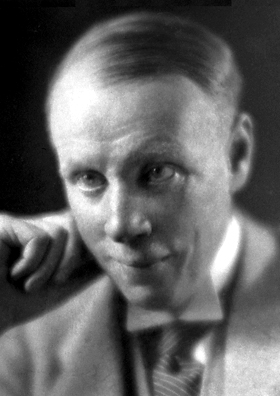
Harry Sinclair Lewis was an American novelist, short-story writer, and playwright. In 1930, he became the first author from the United States to receive the Nobel Prize in Literature, which was awarded "for his vigorous and graphic art of description and his ability to create, with wit and humor, new types of characters." Lewis wrote six popular novels: Main Street (1920), Babbitt (1922), Arrowsmith (1925), Elmer Gantry (1927), Dodsworth (1929), and It Can't Happen Here (1935).
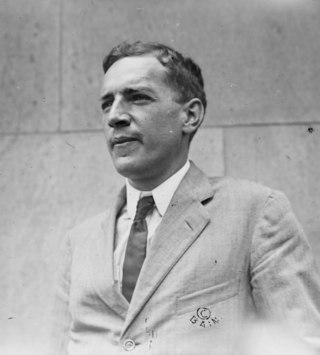
Upton Beall Sinclair Jr. was an American writer, muckraker, political activist and the 1934 Democratic Party nominee for governor of California. He wrote nearly 100 books and other works in several genres. Sinclair's work was well known and popular in the first half of the 20th century, and he won the Pulitzer Prize for Fiction in 1943.
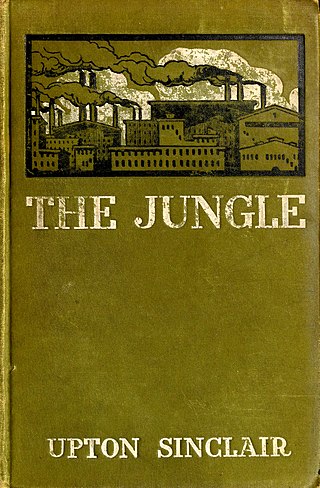
The Jungle is a novel by American muckraker author Upton Sinclair, known for his efforts to expose corruption in government and business in the early 20th century. In 1904 Sinclair spent seven weeks gathering information while working incognito in the meatpacking plants of the Chicago stockyards for the socialist newspaper Appeal to Reason, which published the novel in serial form in 1905. The novel was later published in book format by Doubleday in 1906.
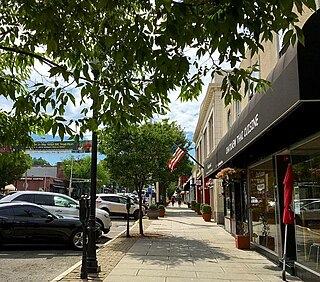
Englewood is a city in Bergen County, in the U.S. state of New Jersey. Englewood was incorporated as a city by an act of the New Jersey Legislature on March 17, 1899, from portions of Ridgefield Township and the remaining portions of Englewood Township. As of the 2020 United States census, the city's population was 29,308, its highest decennial count ever and an increase of 2,161 (+8.0%) from the 2010 census count of 27,147, which in turn reflected an increase of 944 (+3.6%) from the 26,203 counted in the 2000 census.

An intentional community is a voluntary residential community which is designed to have a high degree of social cohesion and teamwork. The members of an intentional community typically hold a common social, political, religious, or spiritual vision, and typically share responsibilities and property. This way of life is sometimes characterized as an "alternative lifestyle". Intentional communities can be seen as social experiments or communal experiments. The multitude of intentional communities includes collective households, cohousing communities, coliving, ecovillages, monasteries, survivalist retreats, kibbutzim, hutterites, ashrams, and housing cooperatives.
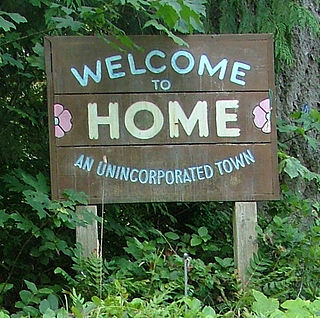
Home is a census-designated place in Pierce County, Washington, United States. The 2010 Census placed the population at 1,377. The community lies on the Key Peninsula and borders the waters of Carr Inlet, an extension of Puget Sound. Home is now primarily a town of beach homes, although around the turn of the twentieth century, it was considered a model, utopian community of anarchists.
Helicon or Helikon may refer to
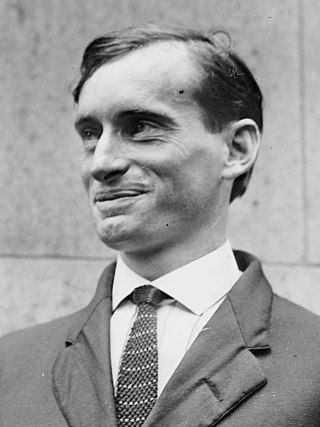
Harry Hibbard Kemp was an American poet and prose writer of the twentieth century. He was known as the "Vagabond Poet", the "Villon of America", the "Hobo Poet", or the "Tramp Poet", and was a well-known popular literary figure of his era, the "hero of adolescent Americans."

Harry May Kelly (1871–1953) was an American anarchist and lifelong activist in the Modern School movement.
The Fellowship Farm Cooperative Association was a Utopian anarchist community in the Stelton section of Piscataway Township, New Jersey that was started in 1912.

Frances Maule Bjorkman (1879–1966) was a New Yorker prominent in the woman's suffrage movement. She was a member of the National Woman Suffrage Association. She was a member of the Heterodoxy women's group. She lived at the Helicon Home Colony, an experimental community founded by Upton Sinclair.
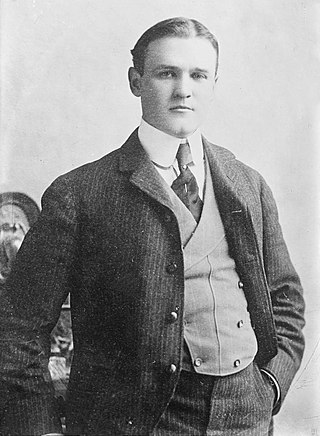
Harry Leon Wilson was an American novelist and dramatist best known for his novels Ruggles of Red Gap and Merton of the Movies. Another of his works, Bunker Bean, helped popularize the term "flapper".
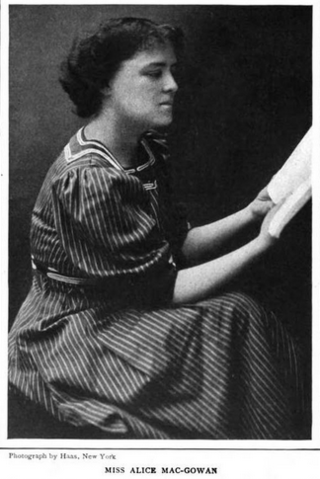
Alice L. MacGowan was an American writer. She and her sister Grace MacGowan Cooke wrote over 30 novels, about a hundred short stories, and some poetry. Alice produced several best sellers, including Two by Two, that was serialized in the Saturday Evening Post and was published in 1922 in New York under the title The Million Dollar Suitcase.
Allan Eugene Updegraff (1883–1965) was an American-born novelist, poet, and editor. After he and his friend, Sinclair Lewis, dropped out of Yale during his junior year, he made a living working odd jobs, as well as writing stories for magazines and newspapers. In 1917 he had his first novel published. He moved to Paris in the mid 1920s, where he lived until his death in 1965. In addition to his six novels, he published poetry, short stories and essays, as well as having a short stint as a book reviewer. He was married twice: after a brief marriage to Edith Summers, which produced two children, he married freelance writer and fashion consultant Dora Loues Miller, who he remained married to for more than forty years, until his death in 1965.

Leonard Abbott was an anarchist and socialist best known for co-founding the Stelton Colony and related Ferrer Association in the 1910s.
Home Colony was an anarchist colony on Puget Sound in Washington State from 1898 to 1909. Its founders were members of a former Bellamyite colony who bought 26 acres and formally organized as the Mutual Home Association in January 1898. Colonists purchased one or two acres and the proceeds purchased new land for the colony. Its colonists lived as individuals rather than cooperatively and tolerated a wide degree of social practices, including free love, free speech. They organized few cooperative institutions aside from a cooperative store (1902), some mutual construction projects, and a weekly anarchist paper, Discontent: Mother of Progress. When the newspaper was fined for obscenity, they replaced it with The Demonstrator. The original 40 colonists grew to 91 by 1900 and 155 by 1906. The colony's numerous visiting speakers included Emma Goldman. Following 1909 changes to the association's articles of incorporation allowed land to transfer from their mutual trust to private ownership, Home declined as a cooperative community but remained a home for anarchists.
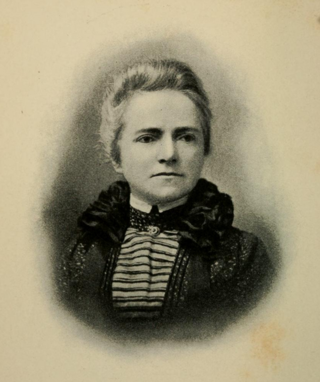
Mary Porter Gamewell was an American missionary, teacher, speaker, and writer who founded a school for girls in Beijing, China. She was the first missionary sent out by the Western Branch of the Woman's Foreign Missionary Society, and the first missionary that the organization sent to China. At that time, the Woman's Foreign Missionary Society of the Methodist Episcopal Church had but five missionaries in the world, and she was one of them. She traveled from Davenport, Iowa to Beijing, China in 1871 and started a school for girls, the institution opening with only one girl. It grew very slowly, more so because it was the first school in China to unbind the feet of the girl, an act that engendered great prejudice. By the time of the Boxer Rebellion, the school for girls, which Porter referred to as the "Davenport school", had 150 pupils enrolled.
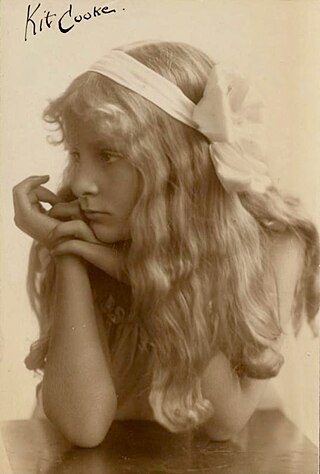
Katharine "Kit" Cooke was an American actress, writer, and director, best known for her leading roles at the Forest Theater in Carmel-by-the-Sea, California and being the daughter of writer Grace MacGowan Cooke. She began her acting career as a child actor, securing roles in local productions of Alice in Wonderland, and The Arrow Maker. She was also a producer at the Forest Theater.

Grace MacGowan Cooke was an American novelist, poet, and short-story writer. She embarked on her writing career by crafting short stories and novels, often collaborating with her sister, Alice MacGowan. She wrote 23 novels, 75 short stories, and more than 30 poems.















